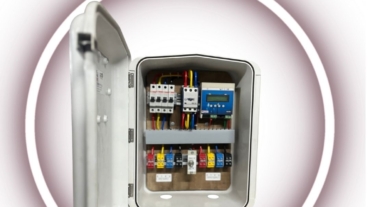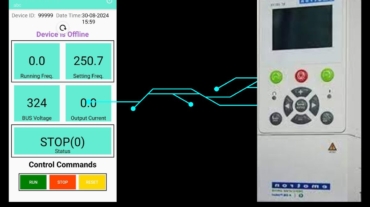Empowering Smart Cities with Aaradhya Electronics’ Astronomical Street Light Control Panel – 15 KVAIntroductionIn the age of smart technology and automation, urban infrastructure is rapidly evolving to become more intelligent, energy-efficie ...
Aaradhya Electronics CCMS: A Unique Solution for Smart Street Lighting and Energy Conservation
Aaradhya Electronics introduces a groundbreaking Centralized Control and Monitoring System (CCMS) that revolutionizes smart street lighting solutions. Combining cutting-edge technology with energy-efficient features, Aaradhya Electronics' CCMS offer ...
6-Channel GSM/GPRS-Based Relay: A Smart Wireless Switching Solution
6-Channel GSM/GPRS-Based Relay: A Smart Wireless Switching SolutionIntroductionIn today’s fast-paced industrial and commercial sectors, remote control and automation have become crucial. Whether for industrial automation, street lighting, ho ...
Smart Drive AC Motor: A Revolution by Aaradhya Electronics Pvt Ltd
Smart Drive AC Motor: A Revolution by Aaradhya Electronics Pvt LtdIntroductionThe industrial world is rapidly transforming, with smart technologies taking center stage in improving efficiency and control. Aaradhya Electronics Pvt Ltd introdu ...
CCMS Controller and Panels: Made in India by Aaradhya Electronics Pvt. Ltd.
CCMS Controller and Panels: Made in India by Aaradhya Electronics Pvt. Ltd.India is rapidly advancing in the field of smart technology, and Aaradhya Electronics Pvt. Ltd. is leading the charge by offering cutting-edge CCMS controllers (Centraliz ...
Why CCMS Street Light Panel is Essential for Efficient Street Lighting
Why CCMS Street Light Panel is Essential for Efficient Street LightingIntroductionStreet lighting plays a crucial role in urban infrastructure, ensuring safety, security, and improved visibility for pedestrians and motorists. However, tradit ...
The Power of Embedded Systems in Smart Solutions | Aaradhya Electronics Pvt. Ltd.
Embedded Systems: The Silent Game-Changer Smart SolutionsIntroductionIn the ever-evolving world of technology, embedded systems are the unsung heroes driving innovation and efficiency in countless industries. Whether it's the smart devices i ...
Embracing the Future: Why Cloud Computing is Essential for Businesses
Embracing the Future: Why Cloud Computing is Essential for BusinessesIntroductionIn today’s rapidly evolving digital landscape, staying ahead of the curve is not just a matter of innovation; it's a necessity. Cloud computing has emerged as a ...
Why Cybersecurity is Essential in Today’s Digital World
Why Cybersecurity is Essential in Today's Digital WorldIntroductionIn an era where technology is woven into the very fabric of our daily lives, the importance of cybersecurity cannot be overstated. Why Cybersecurity is Essential As businesse ...
Understanding APFC (Automatic Power Factor Controller) from Aaradhya Electronics Pvt Ltd
Understanding APFC (Automatic Power Factor Controller) from Aaradhya Electronics Pvt LtdIntroductionIn the modern industrial and commercial landscape, optimizing electrical efficiency is crucial for both cost savings and ensuring the longevi ...

 Cart is empty
Cart is empty








